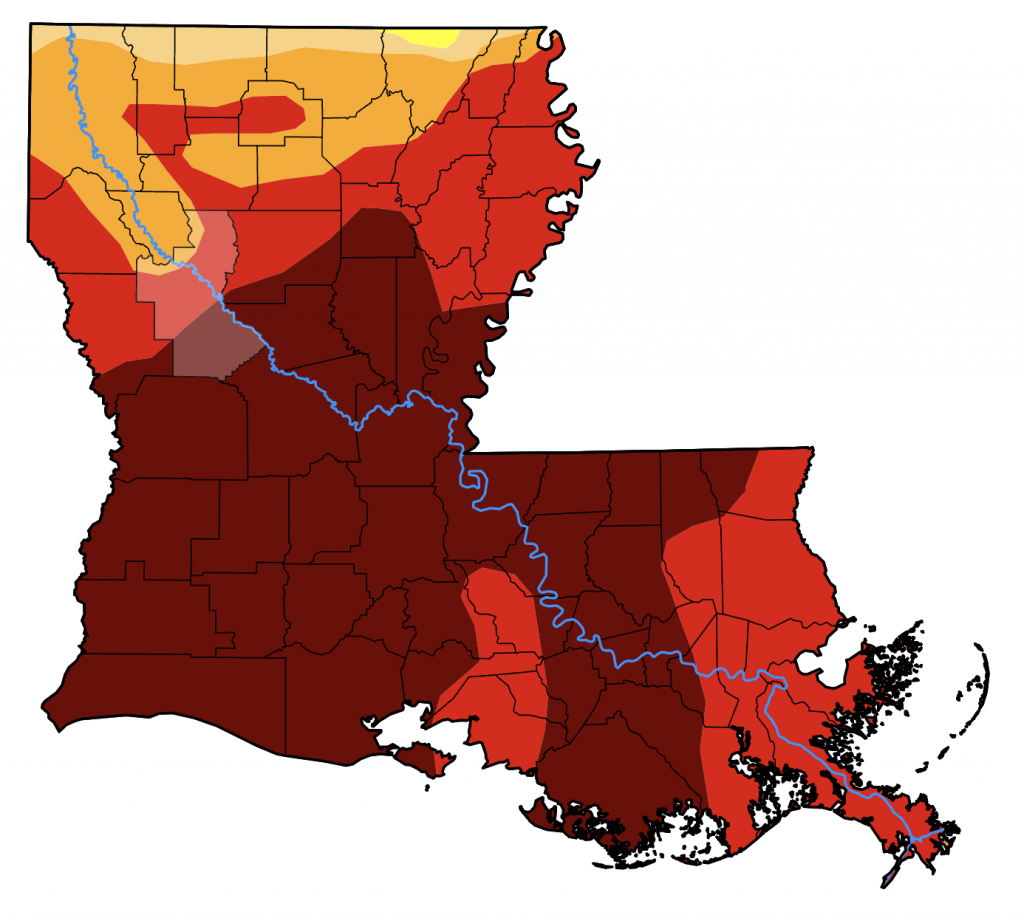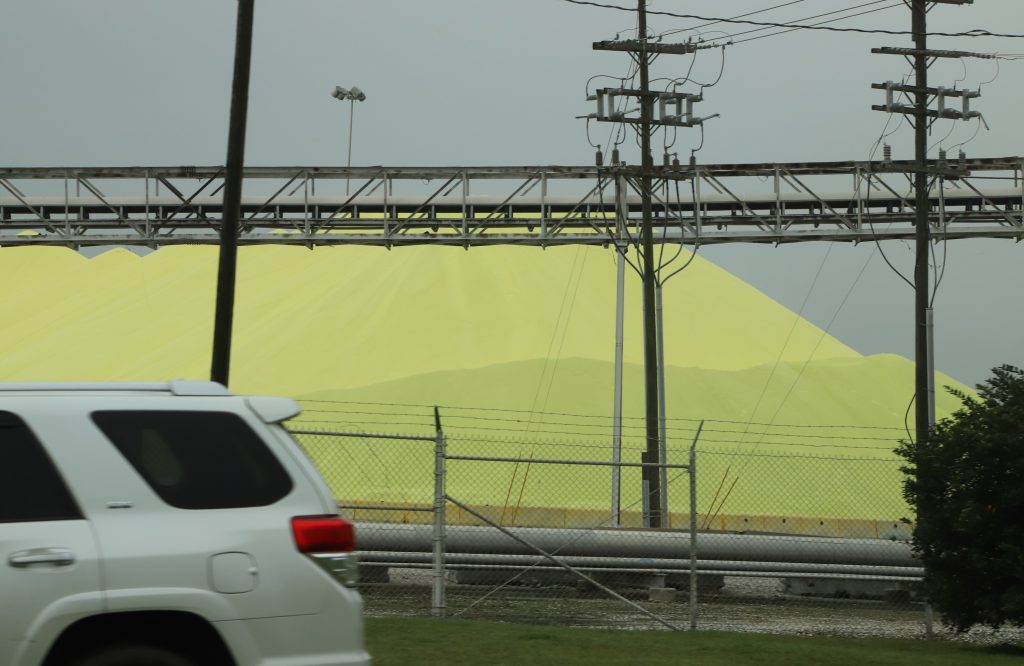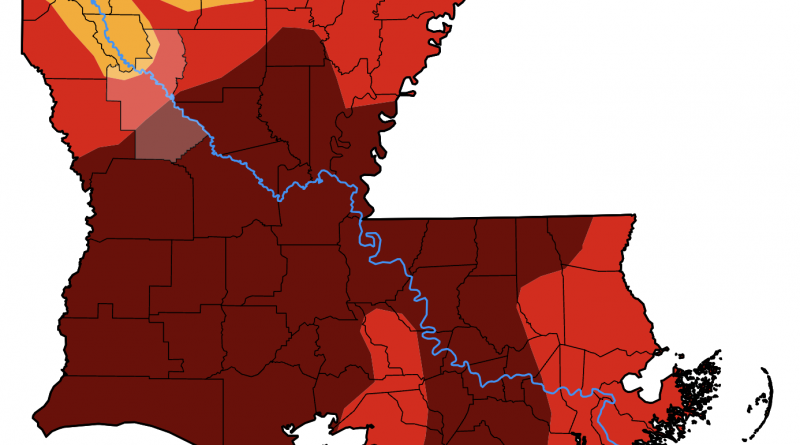Water: New Orleans’ Next Environmental Catastrophe.
Hardly a week goes by these days without some sort of disastrous news about climate change, whether domestic or abroad, to the point that we’ve largely become inured to it. As many as ten thousand people died in catastrophic flooding in Libya last month, a tragedy surrounding a similarly catastrophic earthquake in Morocco. These events barely registered a blip on the domestic news media (because reasons). Domestically, we’re not used to disasters of this scale. But we are going to have to become used to them– especially the ones that indicate the fragile status of our nation’s public infrastructure. New Orleans faces a more slowly developing catastrophe, in which the entire water supply of the city will effectively be undrinkable for an indeterminate period of time. If well-managed, it’s going to be a disaster. If bungled, it’s possible that it could be another Flint, but on a much bigger scale.

The State of the Lower Mississippi
First, let’s look at the state of the natural environment. In Louisiana, the Mississippi River watershed is heavily defined by the low-lying coastal topography of the state, which frequently floods from heavy rainfall and tropical storms or hurricanes. In comparison to Detroit, New Orleans receives almost twice as much rain at around 65 inches per year (Hurricane Katrina, for example, dumped about ten inches of rain on the city in 2005).
Flooding already poses and existential threat to the city due to the fact that much of it is, in fact, located below sea level. While the city maintains an extensive network of pumps to contend with this threat (alongside a large levee network), perhaps a much bigger issue of the low-lying areas of this part of the Mississippi is the historical and ongoing elimination of wetlands, especially in coastal areas. Sea level rise, land subsidence, and development of the built environment has eliminated vast areas of wetlands along the Gulf Coast– more than a million acres in the past century, by some estimates. This means that not only does water now have an easier path toward the city and up its river, but also that there is more water, because less of it can be retained in wetlands.
This is true for most of the Mississippi watershed, where we ceded management of agricultural land to the tyranny of industrial agriculture and then put engineers in charge. Engineers, whose solution to water management is to build dams. Engineers are, of course, interested in concrete and computer models, not in wetland restoration.
Thanks to no shortage of government engineers empowered by the belief that every natural system can be dominated by technology and a neverending stream of infrastructure spending, the dominant paradigm is to allow the US Army Corps of Engineers to just build another dam, or figure out a different way to build a different type of monumental infrastructure intervention. And that’s what’s happening in New Orleans now, as the Corps races to expand an underwater levee that they hope will reduce the threat of saltwater intrusion.

What’s Happening Now
While parts of the United States have seen historic flooding and rainfall this year, the lower Mississippi is presently at historically low levels owing mostly to extreme drought. To give a comparison, the recorded level at New Orleans is currently 3.73′, versus the flood stage level of 17′. Because of the low elevation and low water flow, this is resulting in an insufficient flow of fresh water pushing out into the Gulf of Mexico. Instead, oceanic saltwater is intruding into the river itself, pushing upstream.
In addition to the pumping issues in New Orleans proper, the region has oodles of expansive infrastructure projects whose goal is to move large amounts of water, well, somewhere else. This can be valuable to prevent massive flooding in urban areas, but it can also decrease the flow of the river (the Bonnet Carré spillway, for example, dumps water into Lake Ponchartrain, at the expense of Mississippi River flow rates). I mention this because it shows how technical solutions can be incomplete, imperfect, or can simply move a problem rather than solving it as we might be able to do if we worked with nature rather than trying to quash it.

Saltwater ingress is problematic for any number of reasons, not the least of which are that it will make the municipal water undrinkable for up to a million people. Saltwater, in case you were unaware, is undrinkable. It’s not as though the tap water will go from being clean one day to tasting completely oceanic the next, but it’s more a matter of a gradual increase in salinity that will threaten not only the health of people drinking it from a standpoint of dietary sodium (excess salt is bad for you, and Americans already have way too much of it), but also from a standpoint of potential lead exposure.
Why?
Like most older American cities, New Orleans has tons of lead pipes. In spite of its known toxicity, lead used to be a popular material when used to connect water mains to residential water service because it is cheap and malleable, and it doesn’t corrode under normal conditions. Saltwater, full of sodium chloride, has a high level of chloride ions, which can corrode pipes. Changes to the water quality can also change the electrochemical properties of water, which affect corrosion in systems with mixed metals. While there are numerous strategies to mitigate corrosion, perhaps by increasing the pH of the water or adding orthophosphates, the critical ingredient that was dropped from Flint under the auspices of fiscally responsible emergency management and resulted in the poisoning of an entire city, it’s not clear that these solutions will be sufficient to protect the safety of the drinking water supply.

Normally, an article like this ends with either a call to action or an idea about some solutions. I’m not sure I have any. The Army Corps of Engineers’ solution is to build an underwater levee that will slow, but not stop, the ingress of heavier salt water up the Mississippi. There are other discussions about a water pipeline. This is, mark my words, not going to be the first discussion about a water pipeline being built in this country.
Complications: Water Sources & Uses
One of my first ideas was to see how much it would cost to switch municipal water supplies from the Mississippi River to desalinated sea water. Desalination these days is actually pretty cheap at a marginal cost per gallon (it’d be quite comparable to the costs that we currently have in most cities), but building desalination infrastructure at scale is exorbitant. There’s the other complicating factor in that there’s not a single national standard, nor a single standard for data or analysis, about water consumption and sourcing.
While water is a ubiquitous need for humans and industry, it comes from so many different sources that I found it rather difficult to find legible sources of data on the subject. About two thirds of the country is served by surface-level water sources like lakes, reservoirs, or rivers, while the other third is served by aquifers (wells). A lot of sources focus on overall water consumption, which includes untreated or minimally treated water sources that are used for things like thermoelectric power generation or heavy industry.
One thing that is for certain, though, is that residences– where most water is consumed by human beings for the purposes of maintaining basic cellular functions- consume single percentage points of total water consumption. Thermoelectric power generation and irrigation account for more than 2/3 of all water consumption, although this is complicated by the fact that these are usually using untreated or minimally treated water. In short, it’s not a one-to-one comparison. It’s further complicated by the fact that most heavy industry uses a combination of different types of water. Process water might rely on untreated water that can be used as a thermal medium (to cool something, for example, in a heat exchanger), while these sites also make use of greywater or other recycled or captured water as well as municipal water supplies.
Specialized applications, like nuclear power plants, for example, use special equipment to treat water because they require massive supplies of highly purified water that is cheaper to process on-site than to buy from the municipality (and then have to treat again to a higher standard of purity). In the United States, where our economy is driven by the paradigm of mass consumption, it’s going to be hard to convince policymakers that we should be prioritizing residential access to water by human beings before prioritizing industrial access. This seems as good a case as any for increasing investment in renewable energy, as solar panels don’t use any water once they’re manufactured, and the same is true with wind. The bottom line about New Orleans is that the priorities of the Army Corps of Engineers– and of this country in general- are misplaced in that they seem to emphasize industrial scales of consumption before they prioritize human access to water.
As a matter of sustainability, we can’t simply solve this problem by sending electric trucks to deliver bottled water. We’re going to have to rethink what we are prioritizing and evaluate industry and municipal infrastructure accordingly, whether we are talking about water in New Orleans or water anywhere in this country.




